In their hunger for power, humans have always searched for the perfect weaponry. Empires carved out in history were often the result of strategic planning, political ingenuity, and the most sophisticated warfare of their time.
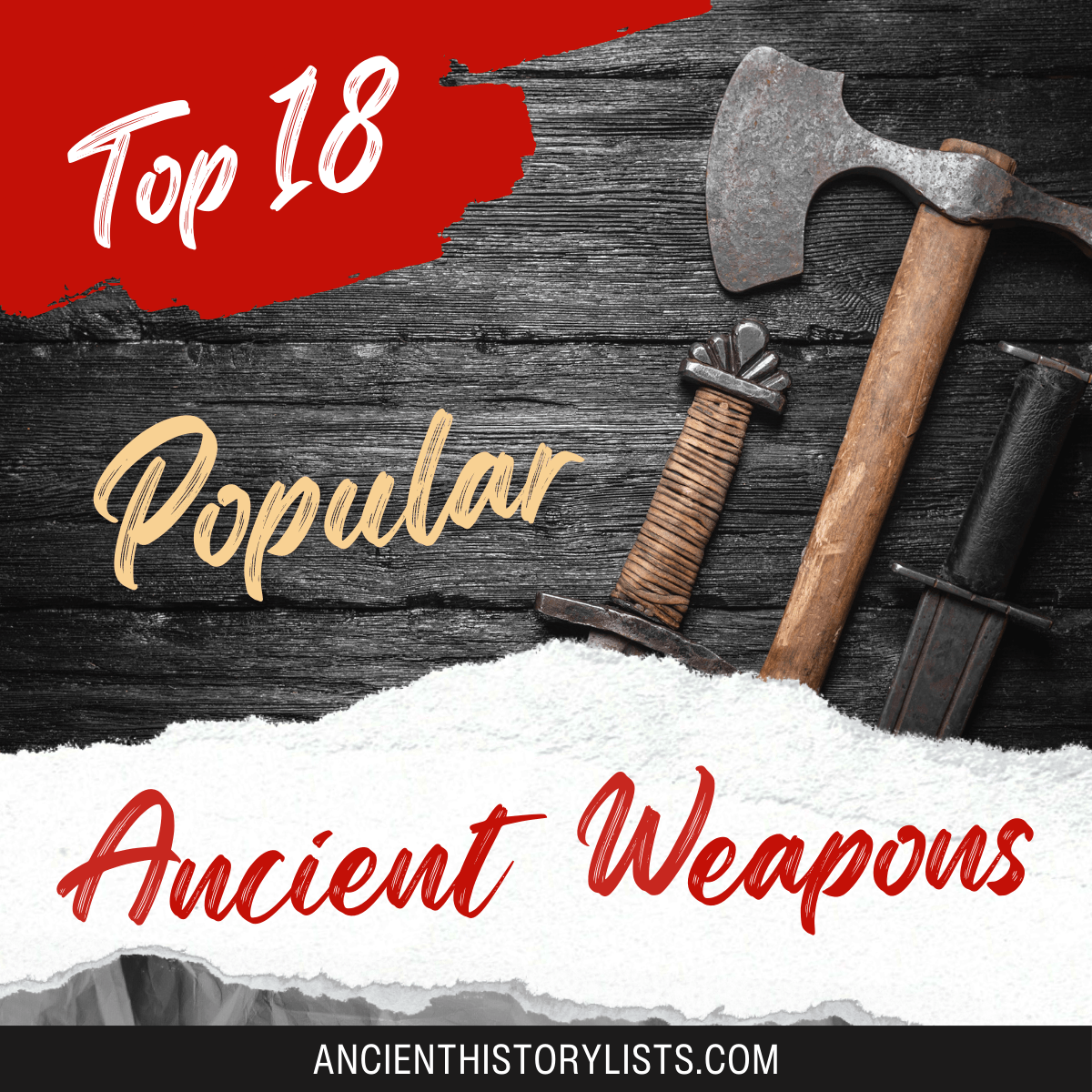
The careful selection of weapons at times proved to be the crucial difference between winning a battle or being slaughtered on the field. The earth has been bled upon during times of war from one century to another, the only difference being the style and choice of the weapon wielded.
1. Roman Scissor
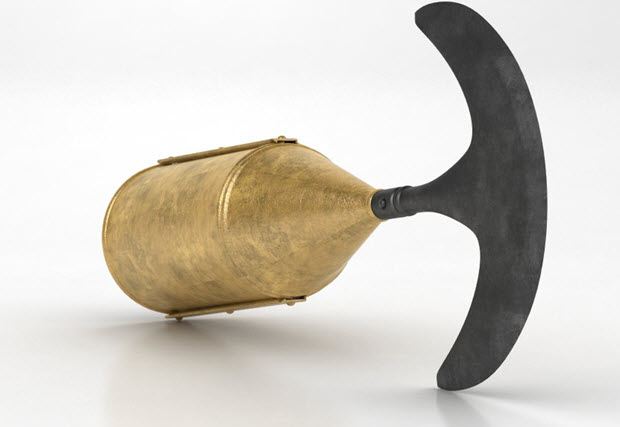
Specification of the Weapon
Length: 18 in (45 cm)
Weight: 5 lb (2,3 kg)
Configuration: Hardened steel
Used by: Roman gladiators
The scissor is a rather unusual weapon from ancient Rome used by the class of gladiators who were called scissores but as gladiators they were not very well described in history. The weapon has two parts: a long tube that protects the gladiator’s arm, and at the end of the tube there is a long, thin cylindrical-shaped pipe with a crescent-shaped blade. It is this unique-looking element of the weapon that made it popular among fans in the audience.
The scissores class of gladiators often fought with the retiarius class whose specialty was the net-like weapon they used. So the scissors were used to cut this net and slaughter the opponent. The tube-like structure that is attached to the arm was also used as a shield to block attacks. The shape and nature of the weapon made it versatile, lethal, and capable of blocking an opponent’s blows from stabbing and slashing.
2. Shuriken
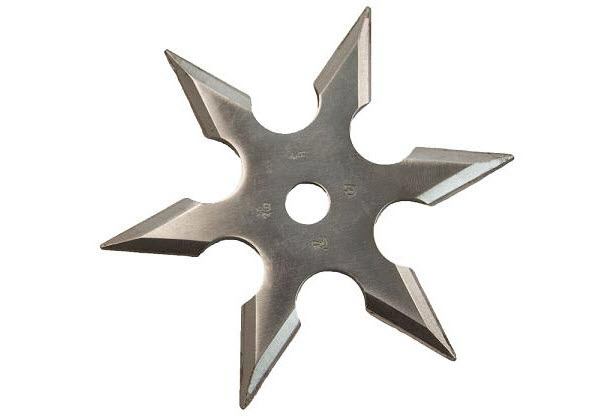
Specification of the Weapon
Length: 5–8 1⁄2 in (13–21 cm)
Weight: 1.3 – 5.3 oz (35–150 grams)
Configuration: Heavy-grade steel
Used by: Japanese
The shuriken is a well-known Japanese weapon often described in popular culture as the “ninja star.” It is used as a concealed weapon for self-defense rather than direct attack. The shuriken comes in different varieties, the hira shuriken most recognizable in popular culture. It is a pointed weapon like a star with varying numbers of edges and styles.
It is made out of sharp-edged materials such as metal or coins. The exposed parts of the body like the eyes, hands, face, etc. are more vulnerable to the shuriken. It was often used by the Samurai as part of their weaponry. The effect of the shuriken was to generate an attack as if made by an invisible swordsman.
3. Bagh Nakh
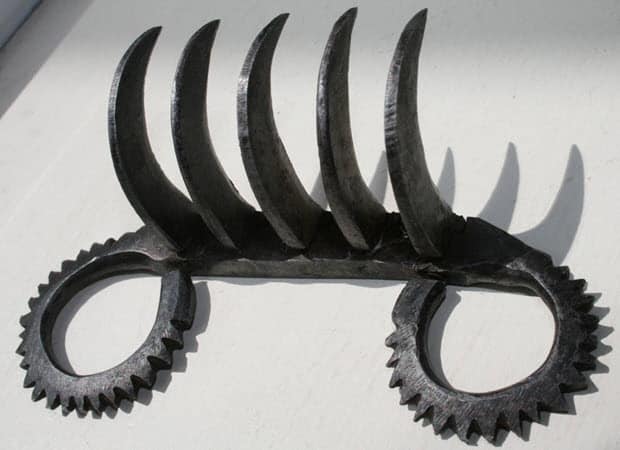
Specification of the Weapon
Length: 6.6 in (main claws), 1.75 in (side spike)
Weight: 2 oz (56 grams)
Configuration: Metal
Used by: Indians
The bagh nakh, also known as the bagh naka, which means “tiger claws” is a claw-like weapon from ancient India. The weapon was based on the claws of big cats. There are four to five curved blades which were used to slash through the skin and muscle.
There are two holes on the side of the weapon to fit in the thumb and the pinky finger which allow the user to conceal the blades within the palm. An additional knife-like weapon was also added to the sides which could be used for stabbing and thrusting. The bagh nakh is often associated with the Marathi warrior Shivaji who used the weapon to kill Afzal Khan, a Moghul general.
4. Madu
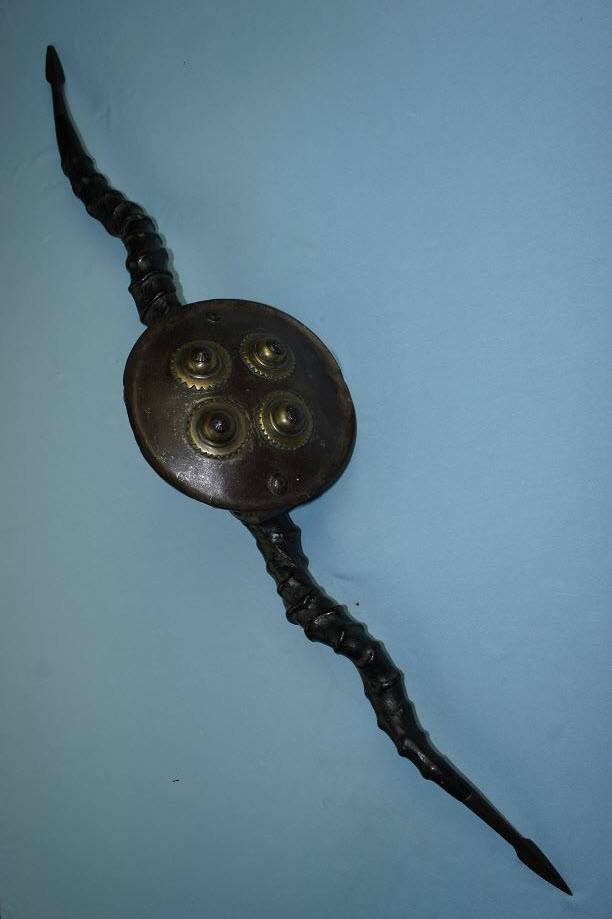
Specification of the Weapon
Length: 24 in (61 cm)
Weight: 3–14 lb (1,4 – 6,3 kg)
Configuration: Steel
Used by: Indians
The madu is another weapon from ancient India. It is also more commonly known as the maru. It is made from blackbuck horns pointing in opposite directions joined by a crossbar which also acts as a handle.
Variations include the addition of a shield for defensive purposes. In later years the weapon was made out of steel. It is believed to have originated in South India and was used mostly as a defensive weapon to ward off counter attacks. The pointed horns may be used for stabbing and thrusting in offensive attacks.
5. Hypaspist
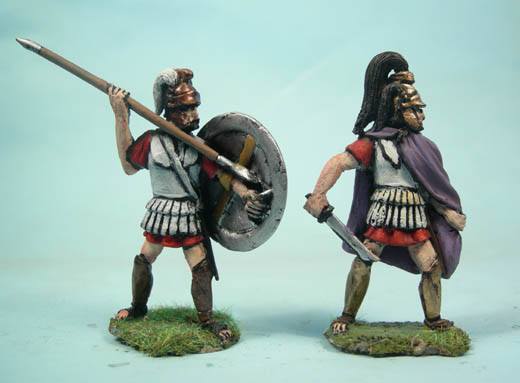
Specification of the Weapon
Length: 24 in (61 cm)
Weight: 3–14 lb (1,4 – 6,3 kg)
Configuration: Steel
Used by: Greek
Unlike other arsenals and weapons on the list, the hypaspist is not a weapon but rather an elite infantry soldier who served in the army of Alexander the Great. Hypaspist in Greek translates as “shield bearer.” The hypaspists were known for their strength, agility, and courage.
A small number of them served as the king’s royal guard. Veteran hypaspist soldiers were also known as the Silver Shields (as they held silver shields) or the Argyraspids. The Silver Shields were mostly elderly warriors but were revered and feared due to their skill and experience in battle.
6. Zhua
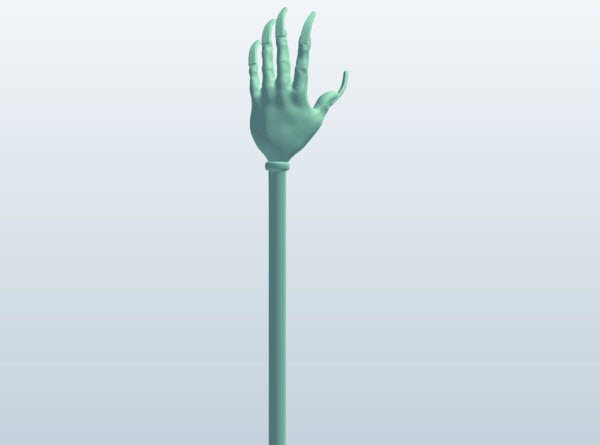
Specification of the Weapon
Length: Determined by size
Weight: Determined by size
Configuration: Iron
Used by: Chinese
The ancient Chinese weapon, the zhua, is one of the most unusual weapons in history. The character for zhua in Chinese translates as “claw” or “animal feet.” The weapon has a long handle and a claw-like figure with sharp blades at the edge. It was used to rip away the weapons and shields of the enemy.
The zhua could be used to impale flesh and then rip it off the opponent. It has the capacity to pull a solider from a mounted horse if used professionally. The weight of the iron zhua is also heavy enough to kill and can be used for bludgeoning, but the sharp claws make it more dangerous and leave the opponent exposed to multiple risks.
7. Shotel
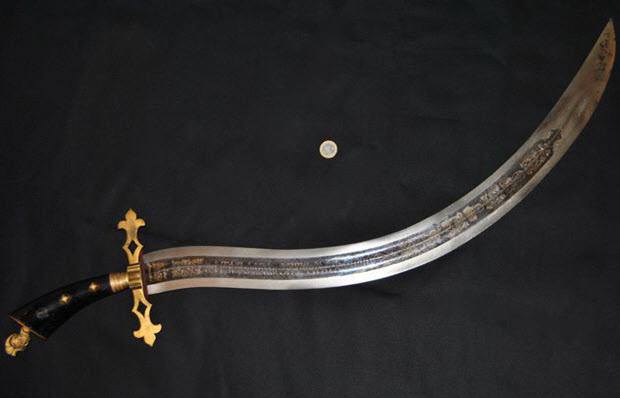
Specification of the Weapon
Length: 40 in (blade) (101 cm)
Weight: Unknown
Configuration: Unknown
Used by: Ancient Ethiopians
The shotel is a curved sword originating in Abyssinia or present-day Ethiopia. It was used by both mounted and unmounted soldiers. The blade is semi-curved, and the curved nature of the sword was focused on delivering stabs to vital organs like the kidneys and the lungs, as it could strike over the shield of the opponent.
The Abyssinians did not practice fencing in swordplay, so the shotel was not primarily made to cut or slice. The blade is flat, double-edged and about 40 inches long. The hilt is a simple wooden piece. It is believed to have originated during medieval times and withstood Western influences during the 19th century.
8. Khopesh
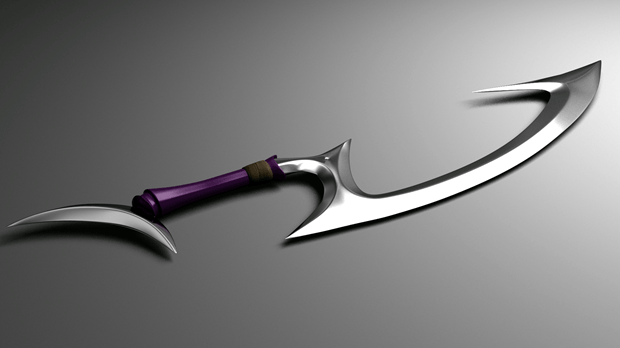
Specification of the Weapon
Length: 20-22 in (50–60 cm)
Weight: 7 lb (3,2 kg)
Configuration: Bronze and steel
Used by: Ancient Egyptians
The khopesh is a sickle sword from ancient Egypt. Swords were not common in Egypt, and daggers and short swords of different types were often used with the exception of the khopesh. The khopesh is a thick, crescent-shaped blade. It is around 50 to 60 centimeters long.
The inside of the hook is not sharpened but the outer part has a single cutting edge. The weapon could also be used as a hook and a bludgeoning tool. It was often made of bronze or iron. Some pharaohs have been portrayed with the khopesh, and some were found in their tombs.
9. Spartan Hoplon Shield
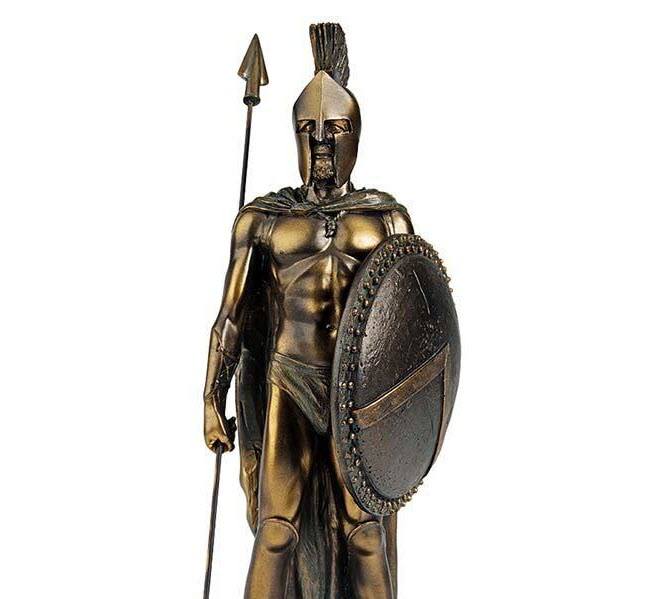
Specification of the Weapon
Length: 7–9 ft (213 – 274 cm)
Weight: 30 lb (13,6 kg)
Configuration: Bronze and steel
Used by: Spartans
The Spartans are often remembered for their circular shields. These are known as hoplons or aspis. The shields were made from wood and the outer part was covered with bronze. They weighed around 30 pounds and measured 3 feet in diameter.
One of the unique features of the shield was the way it was held. The handle was at the edge of the shield supported by a leather strap in the center. It was this technique that allowed the soldiers to freely move their arms during battle.
The size of the shield also acted as a floating device. The hoplon shield could be used for bludgeoning and killing due to its weight and blunt nature. The shield was primarily for defensive purposes but was used by the Spartans to gain an element of surprise.
10. Flaming (Fire) Arrows
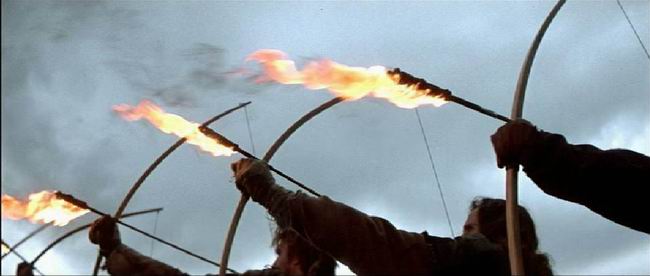
Specification of the Weapon
Length: No specific length
Weight: No specific weight
Configuration: Wood/steel wool
Used by: Many ancient civilizations
Flaming arrows were used throughout medieval times as a thermal weapon. The Romans, Assyrians, Judeans, and many others used flaming arrows. Fire arrows, with rockets attached, were invented by the Chinese during the Song dynasty.
Many variations of fire arrows and flaming arrows were used by the Japanese and Koreans. The simplest flaming arrows had oil or resin-soaked cloth tied below the arrowhead, and these were very effective against wooden structures.
In the fire arrow developed by the Chinese, a gunpowder-filled pouch was attached to the shaft of the arrow to provide propulsive force. It was launched from a platform through cylinders or boxes which could hold up to 1,000 of them. Propelled by the gunpowder, the arrows had a range of around 1,000 feet.
11. The Kakute
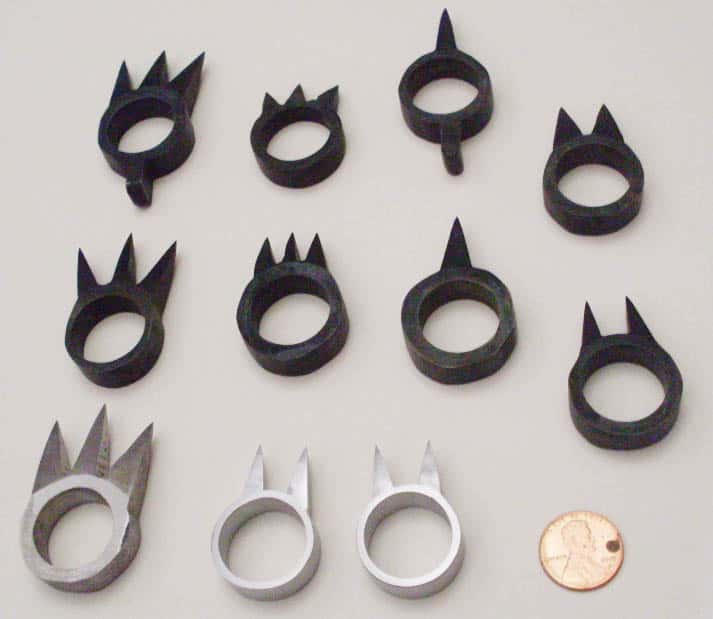
Specification of the Weapon
Length: Very small
Weight: Not much
Configuration: Iron
Used by: Japanese
During ancient times in Japan, spiked rings called kakute were used as weapons. The kakute was similar to a shobo, a wooden weapon, but the kakute was made out of iron and had spikes. Fighters either wore one or two of these rings, one on the index or middle finger and the other on the thumb.
Turning the spikes inwards, they could be applied to victims’ pressure points while gripping the neck or limbs. This maneuver would create a puncture wound and stun the opponent. When the kakute was turned outwards, spikes on the knuckles could be used for attack, or more commonly, for defense.
The kakute was a popular weapon amongst ninjas, in particular the female ninjas who often wore rings. They could use the rings for fast and even fatal attacks by the addition of poison, making it a deadly weapon of choice.
12. The Zweihander
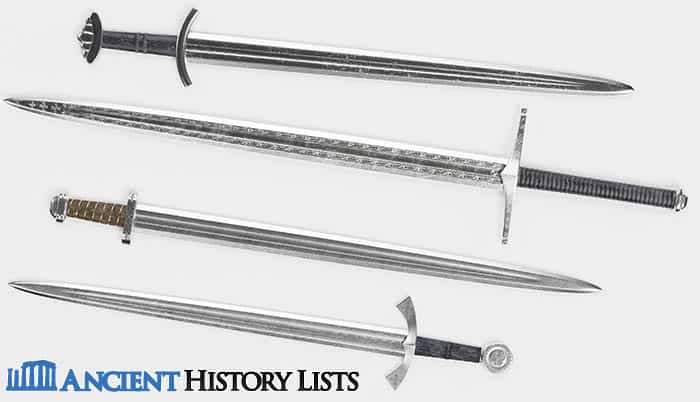
Specification of the Weapon
Length: Over 70 inches
Weight: 3 to 14 pounds
Configuration:Steel
Used by: Swiss and German
The zweihander is possibly the biggest sword in history. It was used by Swiss and German infantrymen for fighting off pikes. These swords were used with two hands and were more than 70 inches (180 cm) long. Their weight usually ranged from 3 to 14 pounds (1.4 to 6.4 kilos). However, the bigger swords were mainly used for ceremonial purposes. In war, they were used against halberds and pikes at long range.
Some of the zweihanders featured a blade with a part that wasn’t sharpened, known as the ricasso. The ricasso was located above the main guard and could be held to gain an advantage at close quarters. Such swords generally had a secondary, smaller guard protruding from the blade. The soldiers who wielded these swords were given twice as much pay as their counterparts, the most famous of which were part of a mercenary band known as the Landsknechte. Although zweihanders were popular, eventually their use became limited to ceremonies only. They were replaced by pikes that could be handled more efficiently.
13. The Haladie

Specification of the Weapon
Length: 20-30 inches (50-75 cm)
Weight: 1 pound
Configuration: Steel
Used by: Indian
Ancient India is known to have produced some amazing weapons, in particular the haladie, the Rajput’s lethal weapon. The Rajputs were ancient Indian warriors who led lives of combat and honor. The haladie, a double-bladed knife, was one of their weapons of choice.
The two double-edged blades were attached to a handle, and with a thrusting action, the weapon could be used for cutting down enemies. The blades were slightly curved which made them ideal for parries and slashes.
Some of these knives had an additional metal band attached to the handle which allowed one more blade or spike to be attached to the haladie. This type of weapon was possibly the first ever dagger with three blades.
14. The Atlatl
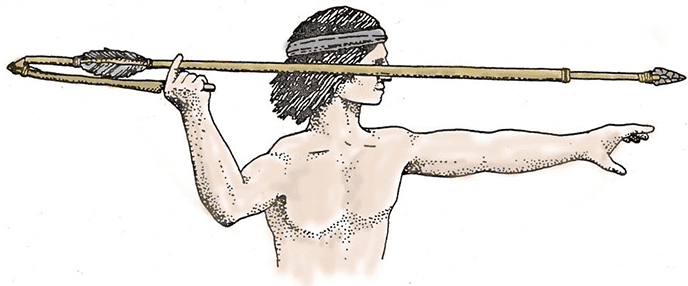
Specification of the Weapon
Length: 4 to 9 ft (1.2 to 2.7 m)
Weight: 0.15 pounds (70 grams)
Configuration: Wood and bone
Used by: South America
The atlatl was a dart-like weapon used in the Stone Age. It is the precursor of the bow and arrow and could be used for throwing spears, although with limited distance and speed. It could fire darts at more than 100 miles per hour. The design of the weapon was deceptive but straightforward. It was merely a stick that had a notch or protrusion at the end where a dart could be set.
Even though it was simple in design, the atlatl was an extremely effective weapon. It was used for hunting woolly mammoth, and some theories suggest that the weapon was responsible for their extinction.
The weapon itself was made of wood with high flexibility, and it was this flexibility which contributed to its speed. When the darts were launched, the weapon bent significantly, allowing the darts to be fired at high velocity. This ancient weapon was very common, and there is much archaeological evidence of its use. It was eventually replaced by the bow and arrow because it was easier and more comfortable to use.
15. The Fire Lance
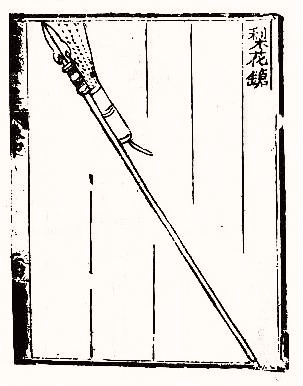
Specification of the Weapon
Used by: Chinese
The fire lance comes from ancient China and resembles a spear. It could fire projectiles filled with gunpowder. The first form of the weapon had a spear to which a bamboo tube was strapped. The tube contained sand which could be used for blinding the enemy and gaining an advantage at close quarters.
As technology advanced, poisoned darts and shrapnel began to be used with the fire lance. For launching projectiles with such strong explosives, a firmer housing was required, and the original strong paper was replaced with metal.
Further variations and developments of the weapon led to the creation of other weapons. An example of this is the fire tube, which was a kind of flamethrower. Later, poisonous chemicals were mixed with explosive matter, causing the enemy to be burnt twice over.
16. The Urumi
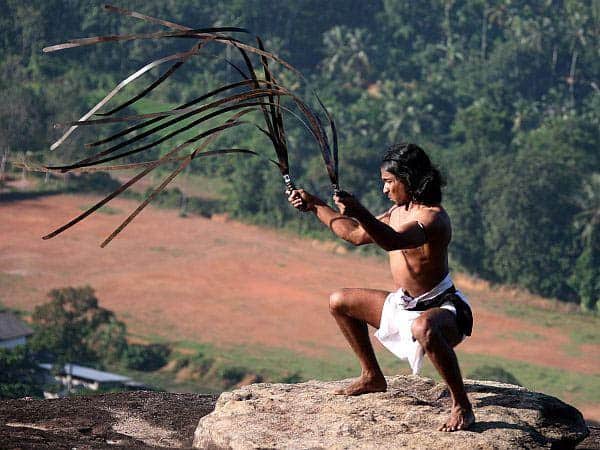
Specification of the Weapon
Length: 48–66 in (122–168 cm)
Weight: 4 pounds (1,8kg)
Configuration: iron or brass
Used by: Indian
The urumi were sword whips with great flexibility, and the material used for the blade was so flexible that the urumi could be worn around the waist as a belt. The length of the edge tended to vary, although it could be as long as five meters.
Whipping the blade in circles created a defensive zone which was difficult for the opponent to penetrate. The blades of the urumi were sharpened on both sides, so it was even risky for a user to wield it and required extensive training to master. It took great skill to perform simple actions like a change of direction or bringing the weapon to a stop.
The urumi required a distinctive fighting style, which is why they were mainly used for assassinations and dueling. They were not suitable for use in war. Even though the requirements to properly wield the weapon were strict, mastering it made the user a deadly warrior. Even parrying was futile against this weapon.
17. The Gastraphetes
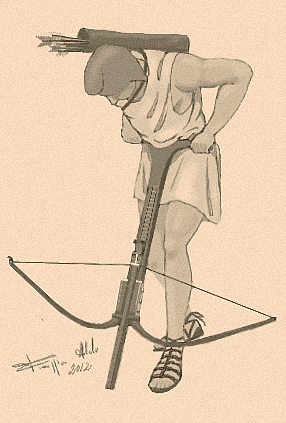
Specification of the Weapon
Length: 40 inches (1 meter)
Weight: 10 pounds (4,6kg)
Configuration: Wood, rope
Used by: Greek
The name of this ancient handheld weapon translates as “belly releaser.” The mechanism of the weapon is that of a crossbow and is detailed in Hero of Alexandria’s Belopoeica. The design of the crossbow is unique.
The user placed his belly at one end of the weapon, pressing it down hard, and the high potential energy resulted in a great range. It was very accurate because the user could take time to aim it properly.
The gastraphetes was probably invented sometime in the fifth century BC. It is believed to have been used extensively in ancient times and is likely to have been one of the weapons used in the Siege of Motya and the Siege of Tyre.
18. Archimedes’ Death Ray
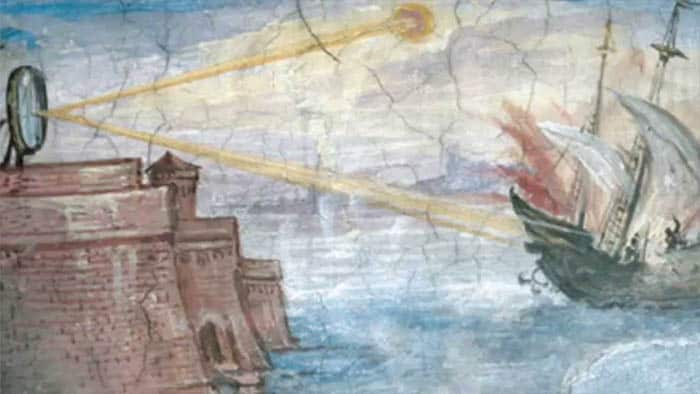
This particular device has resulted in some debate among historians, from its very existence to its effectiveness. The philosopher Galens was the first to mention the use of this weapon.
Archimedes designed the death ray, and it is thought to have consisted of a series of mirrors which were used for reflecting sunlight and concentrating them on to ships. Concentrating the light resulted in a temperature increase, eventually causing the ships to burn.
There have been several tests conducted to prove or disprove the credibility and potential of Archimedes’ death ray. It was indeed found to be practically possible to set ships on fire with it if they were stationary, but a stationary target is not often the case in real life. The undulating waves and movement of the ships had to be taken into account, and for this reason, the credibility of this weapon remains questionable.
Conclusion
Weapons from the ancient world were nasty, brutal, and ruthless. They were not only unique, but also displayed high levels of analytical and critical skill from the past. Their uniqueness and the material they were made from could be enough to startle and then eventually slaughter the enemy.
The weapon choice was often a crucial part of the battle strategy, for example, the Spartans used their big hoplon shields alongside other weapons to march forward and disarm the opponent.